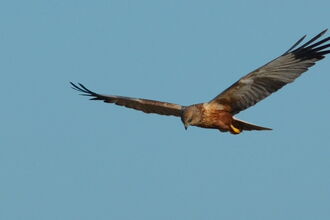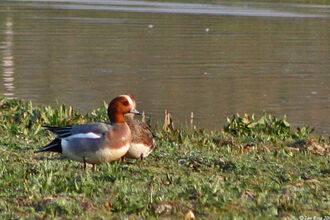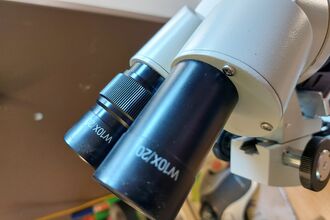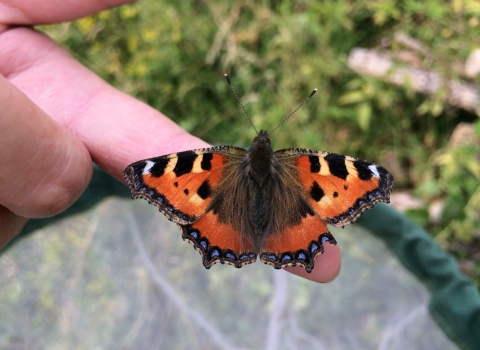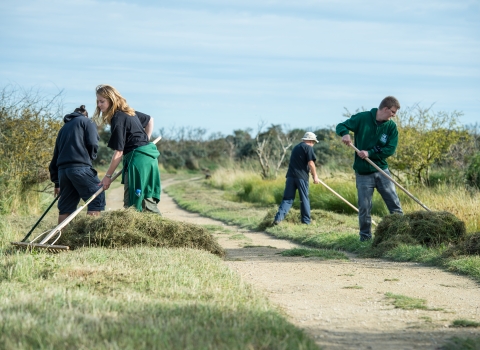Having worked in environmental education for over 15 years, I have done my fair share of netting for freshwater invertebrates. Amazingly, it never gets boring because the creatures you find are fascinating and, for most people, unexpected. Some are downright cool! And it’s not just for children; if you are interested in learning more, checkout our Pond Dipping for Adults Wildlife Training Workshop, or find out more about volunteering with our survey and monitoring team on our website. Many of our education centres offer pond dipping for families so please keep an eye on our events page.
Freshwater Wildlife
Leech by Niall Benvie/2020VISION
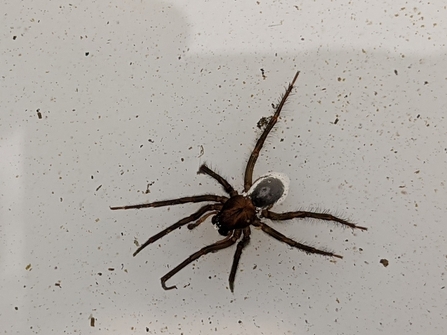
Water spider by Rebecca Neal
Adapting to life in the water
Freshwater invertebrates have many different adaptations to help them live in different conditions. These might be about how they get oxygen, how they cope with fast-flowing water, or how they find food. Here are some favourites:
Stonefly nymphs do push-ups to keep oxygen moving across their body. They like to live in highly-oxygenated, fast-flowing water.
Water spiders carry air in the hairs on their bottom in order to fill their bell-shaped underwater web. This makes them look silvery.
Blackfly (midge) larvae live in fast-flowing streams and rivers. They have a kind of sucker on their bottom that holds them onto their rock, and sticky fan-like mouth parts that they hold over their heads to filter the water for food. If they want to move position, they can loop along their rock, or use a silk thread to anchor themselves whilst they let go and are carried downstream to a better position.
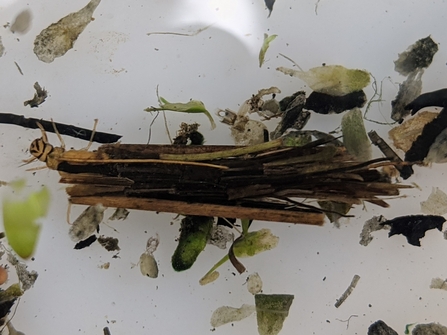
Cased caddisfly larva by Rebecca Neal
The best things to find in freshwater
Great diving beetles are amazing because they are so massive. They can grow to 3cm and their larva can eat fish! The adults are a beautiful racing green colour.
Water stick insects are also huge. Officially, they can grow to 5cm but I've seen bigger. They breathe through a straw in their bottoms.
Leeches are fascinating to watch. When free-swimming, some move like a snake through the water, but when attached to a surface they stretch and contract.
Water spiders. They are just cool.
Cased caddisfly larvae make a mobile home from vegetation or other bits they find in their habitat. Different species use different substrates which they choose for camouflage and protection. Some use stones, others, bits of plant. There is even an artist who makes jewellery out of the cases cast off by larvae that have outgrown them. They keep them in a tank with precious stones and small bits of gold.

Image by Jack Perks
Other fab facts
Freshwater shrimp are often found in pairs. These are “courting couples” where the male is holding onto the female until she sheds her exoskeleton and is ready to mate. He then uses his legs to place packets of sperm near the opening of her oviduct.
Flatworms make their own slime trail, and then feed on animals that get caught in it. They are truly amazing animals that can be cut into piece and each piece can re-grow into another individual.
Mayfly nymphs live underwater and emerge as an adult fly in a mass-hatching event. This ensures that some survive to mate by providing more food than can be eaten by their predators. The adults only survive a day or two and do not even have mouths.
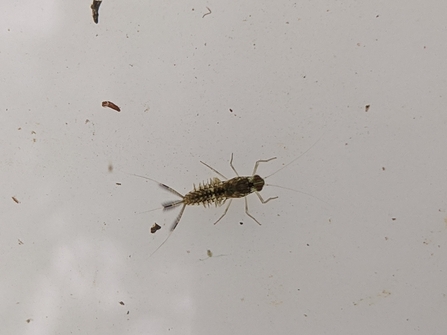
Mayfly nymph by Rebecca Neal
Indicator species
It can sometimes be hard to know how well our ecosystems are working, and often ecologists use “indicator species”. These are easy-to-survey species used to give us information more broadly about the environment they live in. They are usually species that are well studied and easy to identify. There are a host of freshwater indicator species that can tell us about the levels of oxygen and pollution in water bodies, which would also affect other species. Stonefly nymphs are only found in un-polluted rivers, and rat-tailed maggots (the larvae of a type of hoverfly) can be found in water with low oxygen levels.
We have volunteers who carried out water beetle surveys across many of our sites and not only found near-threatened species, but also contributed to the management plans for these sites. We also have volunteers who carry out a standard method to survey river flies as part of our Water for Wildlife project. When carried out regularly, these can be used to highlight incidents of pollution and monitor the long-term health of the river.
Wildlife Training Workshops coming up
Find out more about volunteering
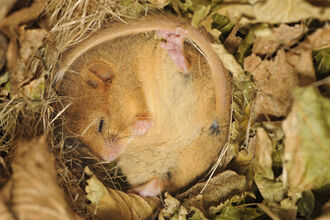
My Wild Life: Kevin Doyle - Dormouse Champion
Kevin Doyle has been surveying dormice in Brampton Wood for nearly 30 years and is excited to see the project enter a new phase
…
Meet the Volunteer - Ancient Woodland Inventory Volunteer, Lindsay Stronge
AWI Volunteer Lindsay Stronge tells us why she likes volunteering
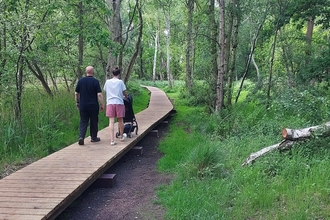
Bedfordshire Reserves Update - Dec 2022
The Bedfordshire Reserves Team have been as busy as ever. Here Senior Reserves Manager Aidan gives an overview of some of what's…


